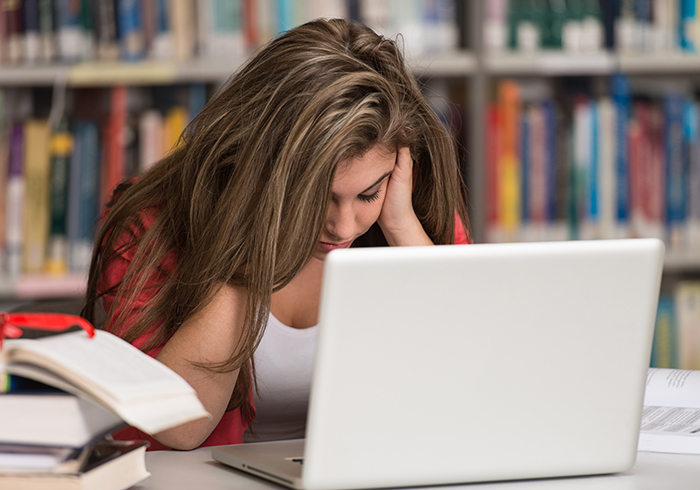Part II: Supporting Student Mental Health and Well-Being During a Crisis


A Conversation with Akilah Patterson, MPH, CHES, Study Coordinator at the Healthy Minds Network
In the wake of COVID-19, Fall 2020 will look a little different at every college or university. Some institutions are planning for shortened terms, others are using hybrid learning models, and some are choosing to remain completely virtual through the next term. The one common denominator is that everyone is dealing with significant, rapid change — which can create significant stress and anxiety for students on top of the stressors many were already facing prior to the pandemic.
In the first article in this series, Dr. Victor Schwartz, Chief Medical Officer of The Jed Foundation, discussed how the abrupt switch to online learning presented a number of challenges for students. “In addition to the potentially challenging disruption of typical campus life and expectations for the school year, the COVID pandemic has raised concerns about future career prospects and graduate school,” Dr. Schwartz explained. “For quite a few students, serious housing, financial and food insecurity issues have been created or exacerbated by the shutting down of campuses and loss of campus-based jobs.”
As we think about how to offer support for students that may be struggling, we must also take steps to empower the students themselves with knowledge and resources they can access on their own.
To learn more about the information institutions can pass along to students, we spoke with Akilah Patterson, MPH, CHES, Study Coordinator at the Healthy Minds Network. She offered insight into how students can recognize a need to address their own mental health, as well as what steps they can take to seek help.
What are some of the biggest stressors for students who are experiencing distance learning for the first time, and what recommendations do you have for them to overcome these challenges?

One of the biggest stressors students faced in the spring was concerns about their academic performance in the midst of major life changes. At the start of the pandemic, many students were not only adjusting to distance learning for the first time, but they also were experiencing abrupt moves out of on-campus housing and losing part-time jobs, among other life-changing events. According to the study: The Impact of COVID-19 on College Student Well-being, done by The Healthy Minds Network & American College Health Association (2020), 66% of students reported more financial stress as a result of the pandemic, and 36% of students moved to a new living environment as a result of the pandemic. Major life changes were occurring in the spring and many students were fearful that they might not perform up to the standards they have set for themselves in their coursework.
Now that we are heading into a new academic year, students have more time to prepare for distance learning. Adjusting to distance learning may be difficult for some and stressful at times. It is important for students to recognize their stressors and find ways to overcome them. This can include talking to people they trust, such as family, friends and classmates, or it could include communicating their concerns with their professors and working with them to find ways to adjust to the new learning setting. In the spring, 78% of students reported their professors were supportive, as many transitioned to distanced learning. Professors are transitioning to the new campus environment themselves and many will be understanding if the transition is difficult for students at times. In this upcoming year, if a student finds difficulty in adjusting to distance learning, they should reach out to their professors or other staff members on campus who can assist them.
What are some signs students can look out for so they can recognize when their mental health needs to be addressed?
Some signs students can look out for include changes in mood, sleep habits, eating habits, and less participation in activities they typically enjoy. It is important during this time for all of us to be cognizant of these changes within ourselves and to also be cognizant of changes among family and friends. If students notice any of these changes within themselves or with people close to them, reaching out to a professional can help them work through those changes and find ways to assist them in their mental health.
For students who were relying on mental health resources on campus, where do you recommend they turn for support while they’re at home during this time?
Many college campuses are continuing to provide mental health services to students virtually, although this varies from campus to campus. If a campus is not providing those services, students can find support through a variety of channels including apps for your phone or virtual counselors and therapists. Additionally, some apps are providing services at discounted rates to remove the financial barriers students may face. Active Minds, a non-profit organization focused on mental health among college students, has a great list of resources students can use when looking for support.
Additionally, the Crisis Text Line provides services to everyone and is only a text message away. Crisis Text Line serves anyone in any type of crisis, providing them access to free, confidential 24/7 emotional support and counseling they need via text. Text HEALTH to 741-741.
Do you have any recommendations for how students can use physical wellness to positively impact mental health during this time?
Mental health and well-being are very much connected to physical well-being and vice versa. Physical activity, or even just a few minutes of outdoor activity, can provide many people with an outlet to help manage their mental health. Going for a walk, jog or run, or even doing an in-home workout, can positively impact one’s mental health.
More Insights



